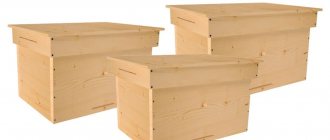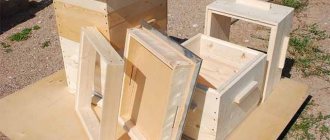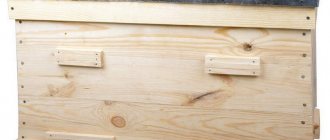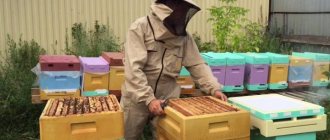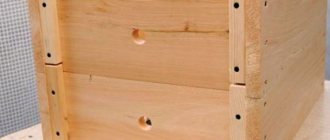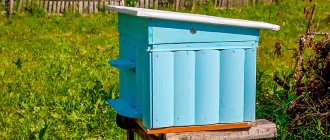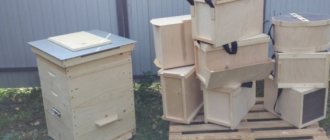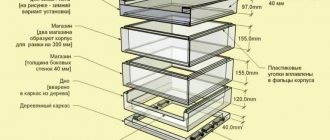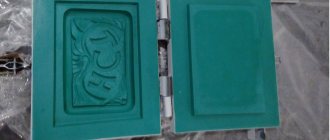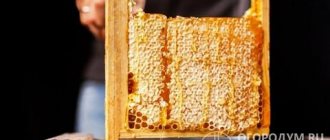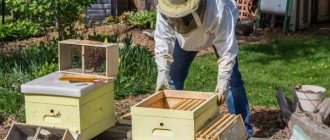More than 70 years ago, the famous French beekeeper R. Delon created a unique beehive, which brought the scientist well-deserved fame. The author named the invention Climatstable (stable climate). Among the beekeepers of the Union, it became known as the Alpine Hive .
A characteristic feature of such housing is conditions that are as close as possible to natural conditions and comfortable work for apiary owners. Many professionals compare caring for alpine hives to being like a child's game of blocks.
What is an alpine hive
Delon, building a hive of his own design, tried to make not just a box convenient for the beekeeper. His goal was to create comfortable conditions for its inhabitants, so that the bees would feel good in their home in hot and cold weather. The beekeeper built a house convenient for all its inhabitants: the queen, worker bees, drones, brood.
Design Features
The building is a structure assembled from several buildings. There is one tap hole, there are no ventilation holes or dividing grilles.
In general terms, the bee house created by Delon resembles a four-building hive, but there are significant differences. The fact is that the Frenchman took as the basis for the project an ordinary nest in which insects live in their natural environment.
That is, the design is as close as possible to the natural home of bees. Therefore, it lacks some details (grids, additional ventilation) that are not present in bee nests.
Oxygen access is carried out through a tap hole, the dimensions of which are increased or made smaller using a damper. Next, natural physical processes come into play: insects move, releasing carbon dioxide. Air rich in carbon dioxide gradually sinks because it weighs more than oxygen. There is a natural circulation of air masses, and the preservation of much-needed heat.
The height of the structure also has a positive effect on the internal conditions: in summer it reaches 1.7-18 meters. The ceiling feeder performs an additional function - it regulates the level of humidity inside the hive, preventing the accumulation of condensation.
The roof and ceiling act like a thermos. Its thickness, on average 3 cm, prevents sudden changes in temperature inside the living space, even during sudden cold snaps in the external environment.
Advantages of an Alpine hive
Any descriptions of a design are less informative than a simple listing of its advantages and disadvantages. It is the indication of all the pros and cons that allows us to draw the right conclusions and make an objective decision about the advisability of building such a hive. First, about the positive aspects:
- the apiary requires a smaller area compared to traditional hives;
- it is simple, assembly does not require the qualifications of a professional carpenter;
- the number of insects killed over the winter is minimal;
- saving building materials;
- despite its height, the hive is quite compact;
- the design reliably protects the bees, making it difficult to steal them from there;
- light weight and excellent transportability;
- there is no need for additional insulation for the winter;
- reliability and durability;
- bees quickly come to their senses in the spring and immediately begin to work actively;
- high efficiency. One hive can produce over 22 kg of honey per season;
- good yield of comb honey;
- high capacity, after pumping out the honey the frames do not break.
Some disadvantages of alpine beekeeping
Although there are few disadvantages to this solution, they still exist:
- bee colonies often do not want to move for permanent residence to a new house from the old standard one. There are even family gatherings. So it is better to settle a new swarm in the hive of the Alpine system;
- Not all honey extractors work with frames of atypical dimensions. Pumping honey from such structures requires a longer time;
- colonies from alpine hives are less popular among beekeepers. Sometimes problems arise with purchasing bee packages and families for a frame of this type;
- inexperienced beekeepers often have problems keeping and breeding bees in the nest of such a system.
Design advantages
The Alpine hive has many unique advantages:
- simple and convenient operation;
- families and brood develop very quickly;
- successful wintering, namely dry and warm;
- high productivity of honey products;
- hives can accommodate many frames;
- done with your own hands according to a special drawing;
- bees are kept without problems;
- no additional pillows for insulation are required;
- Delon's hive is very compact, so it is easy to transport;
- during the pumping period, the frames remain intact and unharmed;
- It is possible to obtain comb honey.
Making an Alpine hive with your own hands according to drawings
Below is a detailed step-by-step description of manufacturing and the main dimensions of the Alpine hive:
- It's better to start from the bottom. For this element, prepare a board 30 mm thick. Thoroughly polish the part, then treat it with an antiseptic. Paint the outside. The taphole dimensions are 30 mm wide and 7 mm high. Attach the landing strip at an angle of 45°.
- The next stage is the body. You will need fir boards, sanded and treated with an antiseptic. Dimensions - 360✕230 mm (2 pcs.), and 338✕230 mm (2 pcs.). Make holes in the sides for the frames, fasten the body parts with self-tapping screws using a screwdriver. Cut a small recess on the sides for transportation.
- The cassette is made from boards, pre-treated in the same way as the other elements. The thickness of all four boards is 30 mm, height is 230 mm. The width of two boards is 360 mm, the other pair is 338 mm. Royal jelly is stored in the cassette.
- The roof, which acts as a feeding trough, consists of several layers: plywood or fiberboard, thermal insulation, roofing. The feeder is made of fiberboard, its dimensions are 324✕57 mm at the top and 320✕295 at the bottom. The assembled part is treated with antiseptics.
- Roof dimensions - 360✕360 mm. The dimensions of the roof are a little larger, or the same. A layer of insulation is laid between them.
- Make a clamp frame from the slats. Width - 10 mm, length of a pair of elements - 362 mm, another pair - 382 mm.
- The last stage is the frame with foundation. It is made from cherry or beech. Ready-made frames will not fit; they are made to specific dimensions. They use slats 320✕25✕9 mm, to which steel wire with a diameter of 3 mm (length - 730 mm) is attached. The wire is fixed in the niches, and slots are made in the bar on both sides for threading the foundation.
- All assembled elements are combined into a single structure. Treat the finished hive with fine sandpaper, then with a grinder with a soft brush, and then paint it.
Technical features
The Delon hive is based on a number of distinctive features from classic hives:
- Dense bottom and walls – 3 cm.
- The high taphole is 7 mm.
- The width of the entrance is also non-standard - 30 cm.
- The inclination of the landing board is 45 degrees.
- One case fits about 8 frames.
- The walls of the case must be equipped with metal combs, this prevents the frames from moving.
- The side strips are replaced by steel wire.
- A slot is made in the upper bar to accommodate the foundation.
Alpine hives show quite high performance indicators. Working with them differs from classic models and may seem difficult for novice beekeepers. But for experienced beekeepers the process is not difficult. In winter, 2 buildings are used. The food supply for insects is located in the upper compartment.
Wintering in such structures is successful. With the arrival of spring, the queen bee moves to the next building and lays eggs there. In the remaining buildings, the bees are working on honey reserves. Bee families are developing well. All processes occur 2 times faster when compared with multi-hull hives. Delon's hive is a rather complex structure. But with its help you can significantly increase the amount of honey pumped out in your apiary.
Domestic modernization of “Apiary Khomich”
Russian beekeeper V.V. Khomich slightly changed and supplemented Delon’s design. The main innovation concerns the installation of a 102 mm frame. This became possible thanks to the use of cassettes of a slightly different size: the width remained the same, but the height changed - 108, not the previous 215 mm. This improvement makes working with the hive much easier.
Another, at first glance, insignificant change concerns the mobility of Khomich’s apiary. It is installed on a semi-trailer, which during the period of active honey collection is transported through meadows and fields, and in winter the apiary remains at home in this form.
Note! In Khomich’s modification, in the summer one hive is assembled from 10-12 sections of 8 frames each.
The frames are made of pine timber and wire 488 mm long. The hundred frames have the following dimensions:
- length - 320 mm;
- thickness - 9 mm.
At a distance of 16 m from the short sides, two holes with a diameter of 2.5 mm are drilled. The distance from the bottom edge to the center of the hole is 25 mm. The distance between the centers of the holes is 288 mm.
A U-shaped wire is inserted into the holes, the length of which is 0.291 meters, short bends are 10.2 cm each.
For the body of the Khomich hive you will need boards of the following sizes:
- 360✕115✕108 — 2 pcs;
- 338✕115✕108 — 2 pcs.
- folds - 12✕12 mm.
Metal dividers for honeycomb frames are mounted on the folds.
The feeder is made similarly to the Delon design, but it has a float. Its dimensions correspond to the dimensions of the compartment; in the middle there is a hole with a diameter of 15 mm. It serves as a part for topping up the syrup, preventing it from souring, and preventing the death of insects.
Flaws
Despite the abundance of positive qualities, such hives have some disadvantages, namely:
- Considering that the frames have non-standard parameters, it is quite problematic to choose a suitable honey extractor for pumping out honey;
- it is difficult to purchase families and bee packages for a frame;
- It can be difficult to move bees from a classic hive to such a house.
If you overcome these difficulties, the beekeeper will get excellent results, and keeping bees will be a complete pleasure.
Gradual migration of bees
Relocating insects to new alpine-type homes is not an easy task. Bees are reluctant to change their old traditional hive to a new layout. If everything goes smoothly, you'll get it done over the summer.
Important! A swarm, a small layer or a whole family is planted in an alpine hive.
To relocate the whole family, it is better to do the following: in a standard home, limit the space to the dimensions of an Alpine hive. The Alpine sections are then placed on top of the frames. After the insects have built one housing, install a second one.
After the start of oviposition, a third body is installed in the gap between the first two sections. The transformation is completed by installing the bottom and cleaning the old house. This is how a standard hive is replaced imperceptibly with an alpine one.
Important Operating Principles
The main difference in the maintenance of families in alpine hives is noted during wintering. Move strong families to single-tier hives. The weak ones are left in the alpine multi-tiered ones. The queen with brood is placed in the lowest compartment, and in the upper body there is a feeder with a supply of pollen and honey.
Making their way to the upper compartment, the bees gradually free the lower one. The empty one is removed when there are no insects left in it. This usually happens with the onset of the first warm days. Therefore, beekeepers believe that caring is like playing with blocks.
Origin
The Alpine Beehive was developed by Roger Delon.
This hive was first announced in the mid-1960s, when Delon published its design in a specialized magazine. It was then called CLIMATSTABLE. The name already hinted at how easily the bees would tolerate various weather conditions.
Gradually, the design was borrowed from the Soviet Union, where it became widespread, although under the name “Alpine”. One of the popularizers of such a hive is the famous beekeeper Vladimir Vasilyevich Khomich , so in the post-Soviet space these designs are often associated with him. He really loves Roger Delon’s invention and although he says that you can breed bees in any conditions if you wish, he prefers this particular option.
